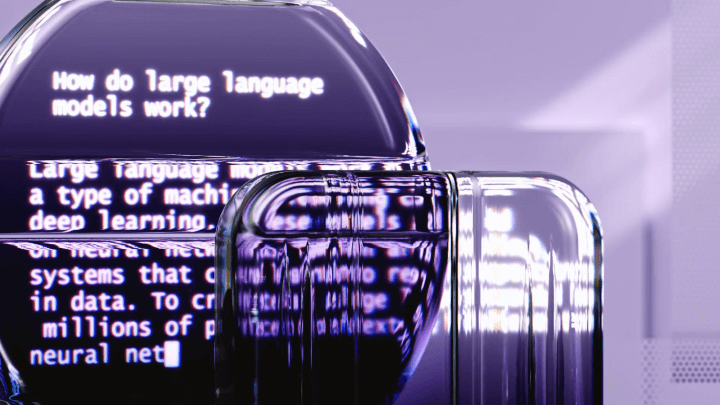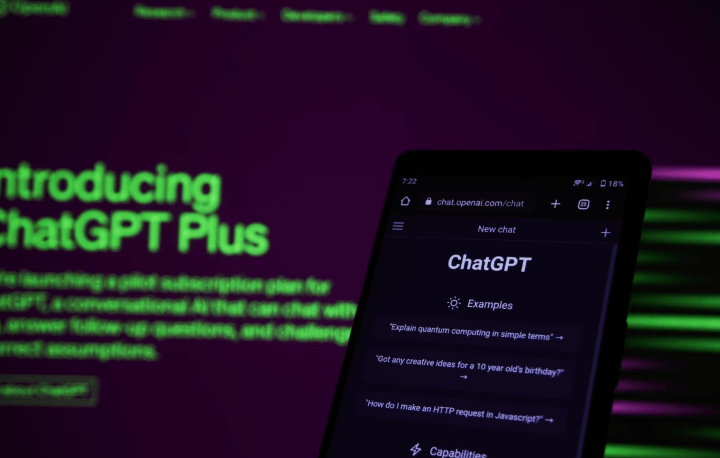Future-Forward Tech Quartet: AI, NLP, LLM, and Proxies Redefining Data Dynamics

At the moment, four technological marvels stand out for their transformative potential: Artificial Intelligence (AI), Natural Language Processing (NLP), Large Language Models (LLM), and proxies.
Together, they’re not just redefining the boundaries of what machines can do; they’re reshaping how we interact with data and the internet at large. Let’s dive deep into each of these technologies, explore their functionalities and applications, and see how they collectively revolutionize data dynamics.
Artificial Intelligence (AI): The Brain Behind the Operation

Artificial Intelligence (AI) is the technological umbrella encompassing an array of capabilities. It allows machines to learn from experience, make decisions, and perform tasks that traditionally require human intelligence.
This field is not just about programming computers to follow instructions; it’s about enabling them to think and act with a level of autonomy. AI’s scope spans from the algorithms that filter your social media feed to the sophisticated systems controlling self-driving cars.
Its core objective is to replicate and enhance human cognitive functions, thereby becoming the cornerstone of more personalized, efficient, and intelligent technological solutions.
Learn more on how proxies shape modern AI and machine learning applications.
Expanding the Horizons of AI
AI technology continuously evolves, pushing the boundaries of what machines can do. It integrates various disciplines, including mathematics, computer science, linguistics, and psychology, to create systems that can understand, learn, and adapt. This multidisciplinary approach has led to the development of AI systems capable of recognizing speech and images, making decisions under uncertainty, and even exhibiting creativity.
Key Applications of AI
- Predictive Analytics
AI excels in analyzing vast amounts of data to forecast future events with remarkable accuracy. Industries such as finance, healthcare, and retail leverage predictive analytics for everything from detecting fraudulent transactions to predicting disease outbreaks. By identifying patterns and anomalies in historical data, AI systems can predict future trends, enabling organizations to make proactive decisions.
- Automation
One of the most visible impacts of AI is its ability to automate routine and complex tasks. In manufacturing, AI-driven robots assemble products with precision and efficiency. In the digital realm, AI automates customer service through chatbots that handle inquiries 24/7, improving response times and customer satisfaction. Automation also extends to personal productivity, with AI personal assistants scheduling meetings, managing emails, and even making travel arrangements.
- Enhanced Decision Making
AI systems provide decision-makers with deep insights that were previously unattainable due to the complexity and volume of the data involved. In healthcare, AI algorithms analyze medical images to assist in diagnosing diseases early and accurately. AI-driven analytics tools help executives understand market trends, consumer behavior, and operational efficiencies in business. This capability is not just about processing data; it’s about uncovering the layers of information that inform smarter, evidence-based decisions.
Natural Language Processing (NLP): The Art of Understanding

Natural Language Processing (NLP) represents a critical intersection of AI, focusing on bridging the communication gap between humans and machines using natural language.
The essence of NLP lies in its ability to parse, comprehend, and assimilate human language in a manner that is not only coherent but also contextually relevant and meaningful.
NLP integrates computational linguistics, which involves rule-based modeling of human language. It is combined with the dynamic capabilities of statistical models, machine learning, and deep learning. As a result, NLP is pushing the boundaries of how machines understand and interact with human language.
The Evolution and Mechanisms of NLP
The journey of NLP from simple syntax analysis to understanding the nuances of human language has been monumental. Early NLP systems relied heavily on hard-coded grammar rules and were limited in understanding and language generation.
Today, NLP systems can learn from vast amounts of text data, allowing them to grasp human language’s subtleties, ambiguities, and varied contexts. This evolution has enabled machines to perform complex language-based tasks with surprising sophistication.
Key Applications of NLP
- Chatbots and Virtual Assistants
NLP is the driving force behind the development of intelligent conversational agents, such as Siri, Alexa, and various customer service chatbots. These agents can interpret user requests, understand context, and generate increasingly indistinguishable responses from those a human might provide. This capability has revolutionized customer service, making it more accessible and efficient by providing 24/7 support and reducing the need for human intervention.
- Sentiment Analysis
One of the most impactful applications of NLP is sentiment analysis, where algorithms analyze text data to determine the sentiment behind words. Businesses use this technology to monitor brand perception, understand customer satisfaction, and tailor products or services to meet consumer needs better. Sentiment analysis provides valuable insights into public opinion, enabling more informed decision-making.
- Language Translation
The dream of breaking down language barriers in real time is becoming a reality thanks to NLP. Translation applications and services like Google Translate have significantly improved, offering near-instantaneous translation between languages with increasing accuracy. It has profound implications for global communication, making information more accessible and facilitating cross-cultural interactions.
Large Language Models (LLM): The Giants of Text Generation

Large Language Models (LLMs), epitomized by the Generative Pre-trained Transformer (GPT) series, represent a significant leap forward in the field of NLP. These models have redefined the boundaries of machine-generated text, offering capabilities that closely resemble human-like comprehension and writing abilities.
Trained on extensive datasets encompassing a wide array of internet text, LLMs can generate richly nuanced text contextually aligned with the input they receive. This advancement places LLMs at the cutting edge of AI’s engagement with natural language. It unblocks new realms of possibility in content creation, software development, and beyond.
The Mechanisms Behind LLMs
The power of LLMs lies in their architecture and the sheer scale of their training data. By analyzing and learning from millions of web pages, books, and articles, these models grasp the intricacies of language, including grammar, style, and context. This learning process enables them to predict the most likely next word in a sequence, generating complete sentences and paragraphs that can be astonishingly human-like in their coherence and relevance.
Key Applications of LLM
- Content Generation
LLMs are revolutionizing content creation across digital platforms. They can produce diverse forms of written content, from informative articles and engaging blog posts to compelling social media updates. This capability is particularly valuable for content marketers, publishers, and creators looking to scale their content strategies efficiently.
- Code Generation
LLMs have also transformed the realm of software development. Tools like GitHub Copilot, powered by GPT-3, assist developers by suggesting code snippets and entire functions based on natural language descriptions. This not only speeds up the coding process but also helps in debugging and learning new programming languages or frameworks.
- Conversational AI
Enhancing the capabilities of chatbots and virtual assistants, LLMs enable more fluid, natural, and context-aware interactions between humans and machines. This improvement in conversational AI makes customer service bots more helpful, friendly, and efficient, thereby enhancing user experience and satisfaction.
Proxies: The Unsung Heroes of Internet Anonymity and Security

Proxies emerge as pivotal solutions in the modern digital world, safeguarding privacy and facilitating unrestricted access to digital content. These intermediaries serve as a bridge between users and the web. They enhance security and enable a myriad of online activities that geographical restrictions or privacy concerns would otherwise hinder.
By rerouting internet connections through servers stationed in various locations, proxies effectively mask users’ real IP addresses. Thus, they elevate the anonymity and security of online endeavors. This capability is indispensable for a range of applications, from data scraping and privacy protection to accessing geo-restricted content.
What are proxy servers? Learn more about proxy functionality and server types.
Deep Dive into Proxy Functionality
The essence of proxy technology lies in its ability to disguise the user’s true digital footprint. When you connect to the internet through a proxy server, your requests are sent to the proxy, which then forwards them to the intended web server. This process not only conceals your IP address but also encrypts your data. Thus, it becomes difficult for third parties to monitor your internet activities or intercept sensitive information.
Key Applications of Proxy Servers
- Web Scraping
In the realm of data collection, proxies are invaluable. They enable businesses and researchers to extract vast amounts of information from websites without the risk of being detected or blocked. By rotating through different IP addresses, proxies can mimic the behavior of multiple users across the globe. Thereby, they ensure the smooth acquisition of data for market analysis, competitive research, or academic purposes.
Get to know how to master advanced data analytics with proxies.
- Privacy Protection
Proxies offer a robust layer of protection for digital privacy that is constantly under threat. By hiding the user’s real IP address, proxies prevent websites, ISPs, and potential cyber attackers from tracing online activities back to the user. That is particularly crucial for individuals and organizations that handle sensitive information or operate in environments with stringent surveillance.
- Geo-Unblocking
Proxies provide a gateway to a borderless internet by overcoming geographical restrictions imposed on content and services. Proxies enable users to freely explore the global internet landscape, whether accessing a blocked service, bypassing censorship, or conducting market research across different regions.
Bringing It All Together
The synergy between AI, NLP, LLM, and proxies is paving the way for a future where digital interactions are more intelligent, personalized, and secure. AI and NLP are making machines smarter and more capable of understanding human language. LLMs leverage this understanding to generate human-like text, opening new avenues for automation and creativity. Proxies provide the necessary backbone for secure, anonymous, and unrestricted data access and collection. This quartet of technologies is not just redefining our digital present; it’s setting the stage for a future where the possibilities are limited only by our imagination.
